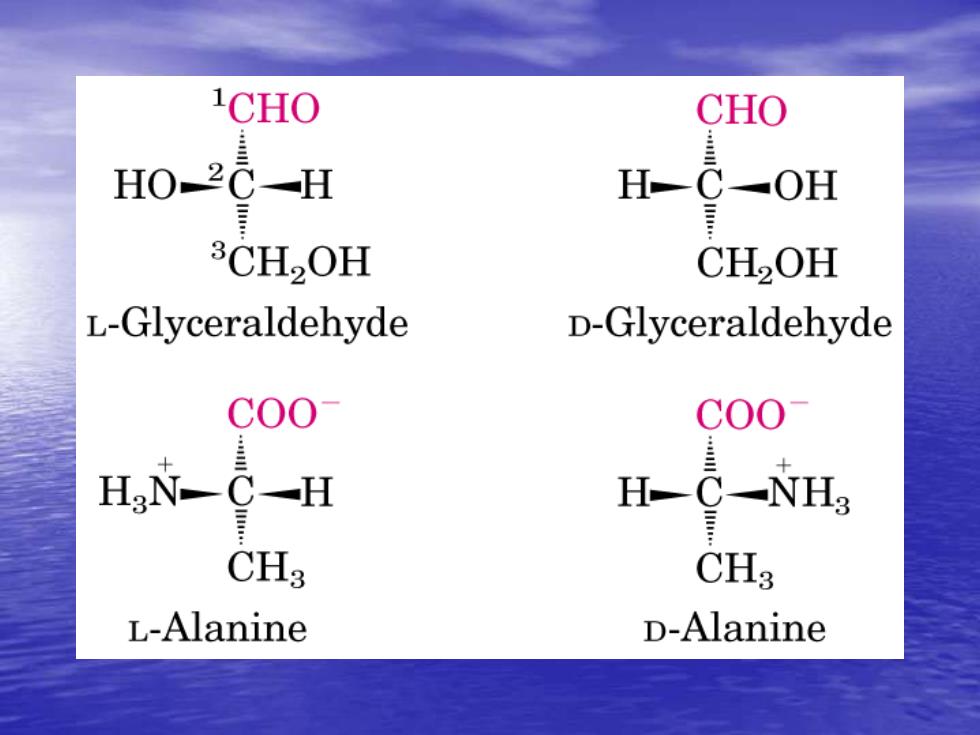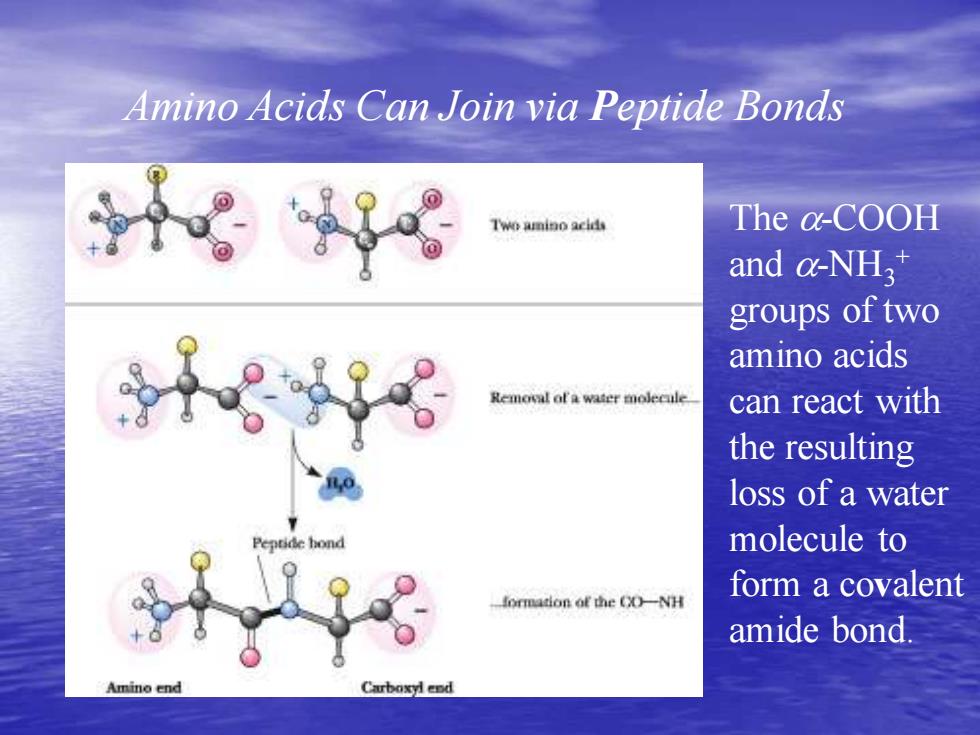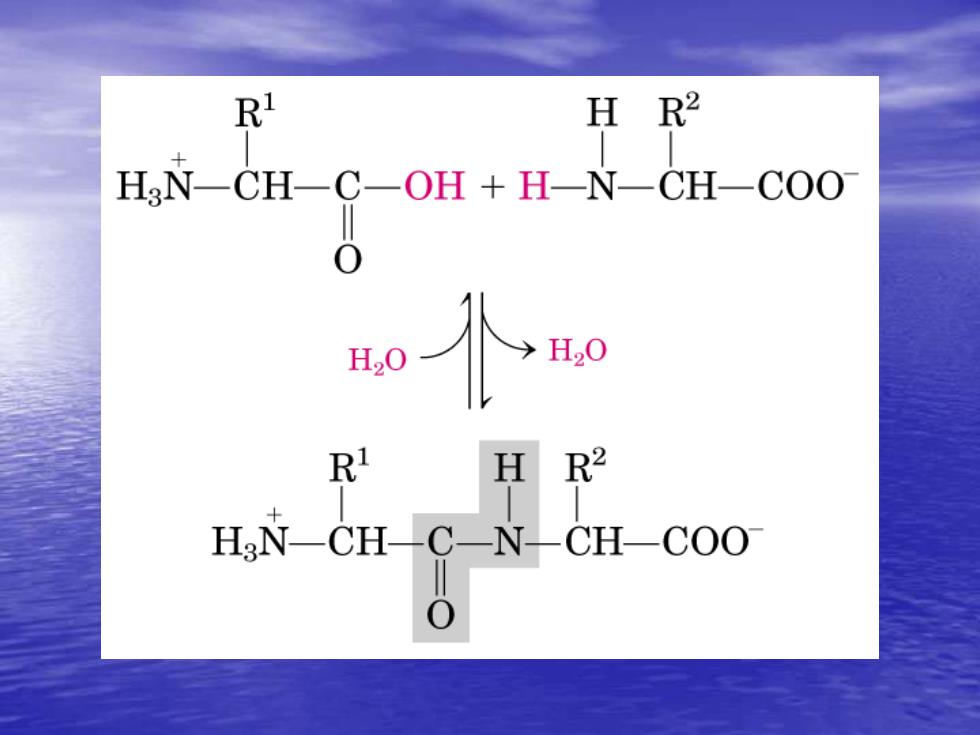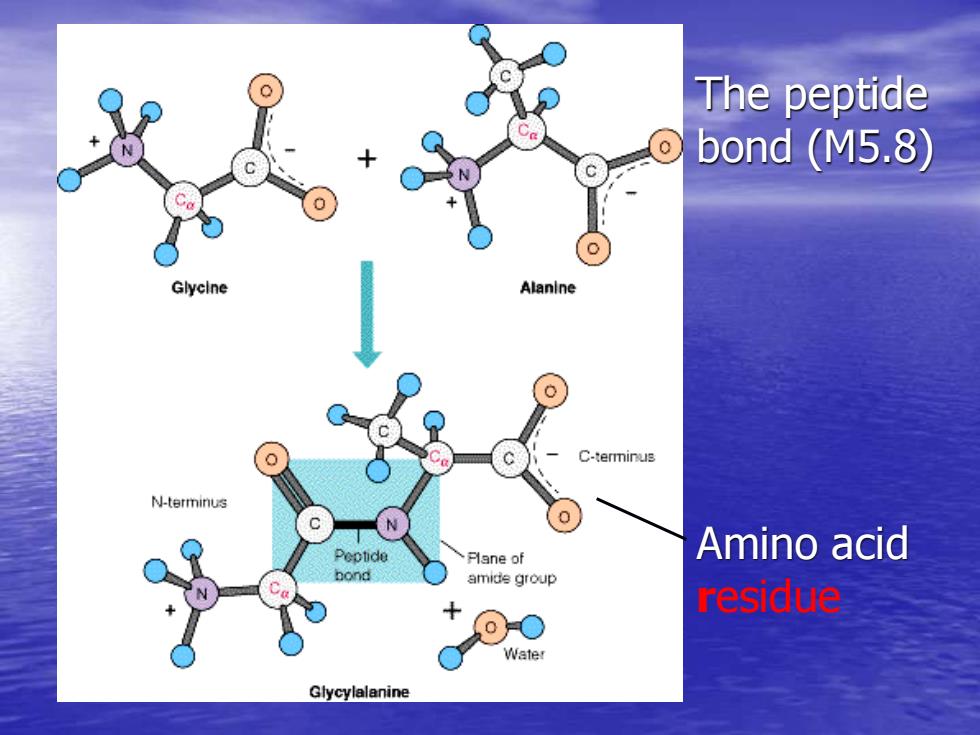
1CHO CHO H0-20-H H- ✉OH 3CH2OH CH2OH L-Glyceraldehyde D-Glyceraldehyde COO COO HgN-C-H H- 二三 NHa CH3 CH3 L-Alanine D-Alanine

Amino Acids Can Join via Peptide Bonds Two amino acids The a-COOH and a-NH,+ groups of two amino acids Removal of a water molecule can react with the resulting loss of a water Peptide hond molecule to -formation of the CO-NH form a covalent amide bond Amino end
Amino Acids Can Join via Peptide Bonds The a-COOH and a-NH3 + groups of two amino acids can react with the resulting loss of a water molecule to form a covalent amide bond

R1 H R2 HgN-CH-C-OH +H-N-CH-COO o w人 R1 H R2 HN-CH-C-N-CH-COO 0

The peptide bond (M5.8) Glycine Alanine 0 C-terminus 小-terminus 0 Flane of Amino acid hond amide group residue Water Glycylalanine
Amino acid residue The peptide bond (M5.8)

Common Amino Acids The 20 amino acids that are the building blocks of most proteins can be classified as: (a)nonpolar (hydrophobic), (b)polar,neutral, (c)acidic,or (d)basic
Common Amino Acids The 20 amino acids that are the building blocks of most proteins can be classified as: (a) nonpolar (hydrophobic), (b) polar, neutral, (c) acidic, or (d) basic